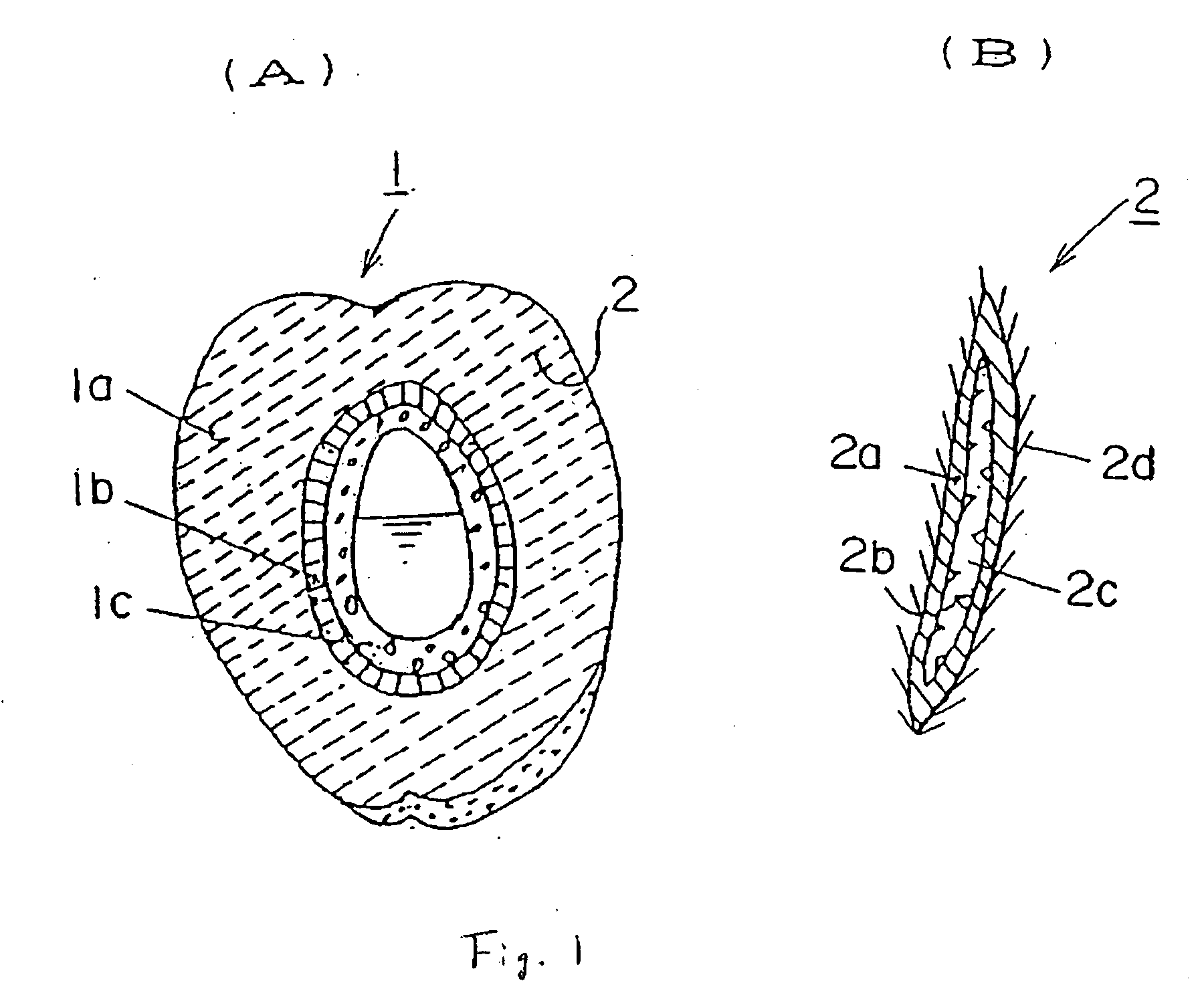Plastic Molding Capable of Carbon Dioxide Reduction
- Summary
- Abstract
- Description
- Claims
- Application Information
AI Technical Summary
Benefits of technology
Problems solved by technology
Method used
Image
Examples
examples
[0053] Hereinafter, the present invention will be explained in more detail by examples.
production example
Production of a Dry Powder of Compressed Coconut Mesocarp Fiber Residue
[0054] To remove coconut endocarp and embryo, the coconut was immersed into fresh water for about 10 to 16 months to dissolve pulpy substance and then fiber portion was collected. Then, fiber residue that has been obtained when the fiber portion was used for producing strings, nettings, ropes, and so on was exposed to sunlight for about 2 years to remove the contained saline matter and tannin. Further, forcible drying by hot air at 105° C. was performed for 8 hours or more to reduce the moisture content to 10%. Then, minute fragments having a length of 5 to 10 mm that was discharged upon net making with the fibers were collected and compressed to a compression ratio of 6:1 using a press machine. The thus obtained compressed matter was pulverized by a pulverizer and the resultant was subjected to powder processing using a-hammer mill, a jet mill, and a ball mill in this order. Thereafter, the obtained powder was...
example 1
[0055] The dry powder of compressed coconut mesocarp fiber residue prepared in the above-mentioned Production Example and polyethylene were mixed at a ratio of 30:70 by weight to produce pellets. The pellets and polyethylene were blended at a ratio of 2.4:97.6 by weight to obtain a material for nonbiodegradable plastic moldings. The material was subjected to film formation using an inflation extrusion molding machine at a processing temperature of 160° C. to mold a film molding having a thickness of 25 μm.
PUM
| Property | Measurement | Unit |
|---|---|---|
| Particle size | aaaaa | aaaaa |
| Volume | aaaaa | aaaaa |
Abstract
Description
Claims
Application Information
 Login to View More
Login to View More - R&D
- Intellectual Property
- Life Sciences
- Materials
- Tech Scout
- Unparalleled Data Quality
- Higher Quality Content
- 60% Fewer Hallucinations
Browse by: Latest US Patents, China's latest patents, Technical Efficacy Thesaurus, Application Domain, Technology Topic, Popular Technical Reports.
© 2025 PatSnap. All rights reserved.Legal|Privacy policy|Modern Slavery Act Transparency Statement|Sitemap|About US| Contact US: help@patsnap.com


